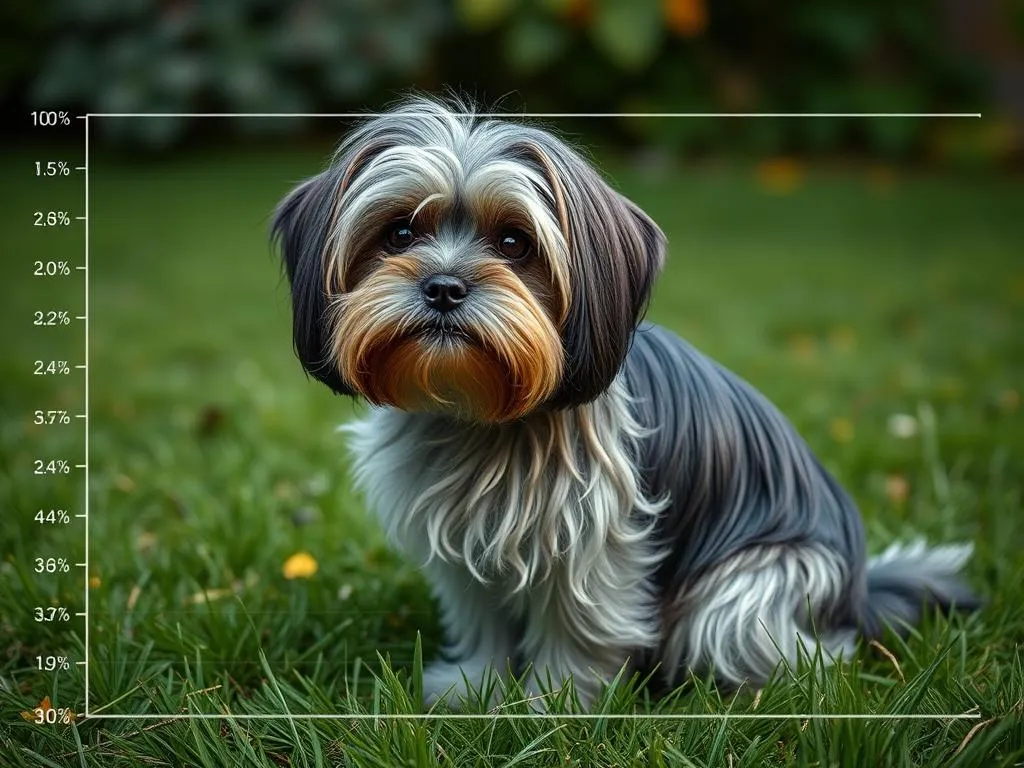
Understanding the intricacies of dog health care is crucial for any pet owner, especially for those who have a beloved Havanese. These small, affectionate dogs require specific attention to their health and size as they grow. The Havanese breed, with its rich history and charming characteristics, is especially sensitive to the nuances of health care, making it imperative for owners to familiarize themselves with the Havanese size growth chart.
Understanding the Havanese Breed
General Characteristics
The Havanese is a small dog breed, known for its friendly demeanor, lively personality, and beautiful, long, flowing coat. Originally developed in Cuba, these dogs were cherished companions for wealthy families and have maintained their loving nature throughout the years. With a lifespan of 14 to 16 years, Havanese are generally healthy but are prone to certain health issues, including hip dysplasia and eye problems.
Importance of Size in Health
Size plays a pivotal role in determining a Havanese’s health care needs. Larger dogs may require different types of exercise and training compared to smaller breeds. Understanding how size impacts their health and well-being helps owners provide more tailored care, ensuring their furry friends thrive. Additionally, size can influence how Havanese interact with their environment, affecting everything from their exercise routines to their training methods.
Havanese Size Growth Chart
Overview of Growth Stages
To effectively monitor a Havanese’s health, it’s essential to understand the various growth stages they undergo:
- Puppy Stage (0-6 months): Rapid growth and development, requiring special attention to nutrition and socialization.
- Adolescence (6-12 months): Slower growth, but behavioral changes can arise as they enter their teenage phase.
- Adulthood (1-3 years): Stabilization in size and weight; this phase focuses on maintaining health and preventing obesity.
Detailed Size Growth Chart
A Havanese size growth chart provides a clear indication of what to expect as your dog matures. Here’s a breakdown of average weight and height at each growth stage:
| Growth Stage | Average Weight (lbs) | Average Height (inches) |
|---|---|---|
| Puppy (0-6 months) | 3 – 10 | 8 – 12 |
| Adolescent (6-12 months) | 7 – 12 | 9 – 12 |
| Adult (1-3 years) | 10 – 15 | 8.5 – 11.5 |
This chart serves as a guide but remember that individual Havanese may vary based on factors such as genetics and environment.
Factors Influencing Growth
Several factors can affect the growth of a Havanese:
- Genetics and Breeding: The lineage of a Havanese can greatly influence its size. Responsible breeding practices can mitigate some health risks.
- Nutrition and Diet: A well-balanced diet is crucial for healthy growth. High-quality dog food tailored to their life stage can support optimal development.
- Exercise and Environment: Regular physical activity contributes to healthy growth and helps maintain an ideal weight.
Health Care Essentials for Havanese
Regular Veterinary Care
Routine veterinary check-ups are essential for monitoring a Havanese’s health. Regular visits allow for vaccinations, preventive medications, and early detection of any potential health issues. An annual health check can include:
- Vaccinations (parvovirus, distemper, rabies)
- Preventive treatments (flea, tick, and heartworm medications)
Nutrition
A balanced diet is vital for the overall health of your Havanese. Feeding them high-quality dog food that suits their age, size, and energy level is essential. Portion control is equally important to prevent obesity, which can lead to other health complications.
- Recommended Diet: Look for dog food containing high protein, healthy fats, and essential vitamins and minerals.
- Feeding Schedules: Establish regular feeding times to help regulate their metabolism and digestion.
Exercise Needs
Despite their small size, Havanese require daily exercise to maintain their health and prevent boredom. Regular walks, playtime, and interactive games can satisfy their energy levels. Fun activities suitable for their size include:
- Short walks (15-30 minutes daily)
- Fetch and tug-of-war games
- Agility training
Grooming and Hygiene
Havanese have a unique coat that requires regular grooming to prevent matting and skin issues. Regular brushing (at least twice a week) helps keep their coat healthy. Additionally, dental care should not be neglected. Regular teeth brushing and dental chews can help maintain good oral hygiene.
Common Health Issues in Havanese
Genetic Predispositions
Havanese dogs are prone to specific genetic conditions. Being aware of these can help owners take preventive measures. Common issues include:
- Hip Dysplasia: A genetic condition where the hip joint does not fit into the hip socket, leading to arthritis.
- Patellar Luxation: A common issue where the kneecap dislocates, causing pain and mobility problems.
- Eye Problems: Conditions such as cataracts or retinal dysplasia can occur.
Preventive Measures
Preventive care is crucial for maintaining a Havanese’s health. Steps to minimize the risk of health issues include:
- Choosing a reputable breeder who tests for genetic conditions.
- Maintaining a healthy weight through proper diet and exercise.
- Regular veterinary check-ups to catch any potential problems early.
Recognizing Signs of Illness
Being aware of the signs of illness can be life-saving. Common symptoms include:
- Changes in appetite or drinking habits
- Lethargy or unusual behavior
- Vomiting or diarrhea
If any of these symptoms persist, it’s essential to consult with a veterinarian.
Tips for Raising a Healthy Havanese
Early Socialization
Socializing a Havanese puppy is crucial for their development. Exposure to different environments, people, and other animals can help them grow into well-adjusted adults. Tips for effective socialization include:
- Taking your puppy to puppy classes or dog parks.
- Arranging playdates with other friendly dogs.
- Introducing them to various sights, sounds, and experiences.
Training Techniques
Training a Havanese requires patience and consistency. Positive reinforcement works wonders with this breed. Recommended training methods include:
- Using treats and praise for rewarding good behavior.
- Keeping training sessions short and engaging.
- Being consistent with commands and rules.
Creating a Safe Environment
Havanese thrive in a safe, stimulating environment. Dog-proofing your home is essential for keeping them safe. Tips include:
- Removing toxic plants and chemicals.
- Ensuring small objects are out of reach to prevent choking hazards.
- Providing toys and mental stimulation to keep them engaged.
Conclusion
Owning a Havanese can be immensely rewarding, but it comes with the responsibility of understanding their unique health care needs. A thorough grasp of the Havanese size growth chart and the factors influencing their health can help ensure a long, happy life for your furry friend. By focusing on regular veterinary care, proper nutrition, exercise, and grooming, you can create a nurturing environment that promotes their well-being.
These adorable companions bring joy and love into our lives, and with proactive health care, we can ensure they remain healthy and happy for years to come.









